Our well is somewhat unique in that water has been oozing off the top constantly at a rate of about 2 gallons per hour. This is a problem in the cold months as it can freeze and damage the casing or the hand pump. Since we had the well drilled last March, we knew we’d have to take care of this before Winter came back. Well, here we are; I spent the whole Summer thinking about what we could do with it. The standard solution in these cases is to create a sump pit near the well to dispose of the water and give it back to the ground bellow frost line. But few things are standard in our house, so I thought about maybe pumping the water out with a Raspberry Pi driven pump but this presented its own set of challenges.
Finally, I decided to indeed dispose of the water in the ground but first run it all around the house, 170 feet away from the well. It brings me to great soil which percolates well; above all, it gives us a fresh potable water line running all around the house which we can tap for projects.
We could circulate it in a coil for air conditioning in the house, we could use it for filling our outside shower in the Summer without having to move water, we could have it keep an animal water tank replenished. In other words, the flowing water becomes an opportunity for improvements as opposed to something we just dump back into the ground.
Of course, it’s harder, less standard and more costly. The well is by far the most expensive project we’ve undertaken so far, we have spent on it as much as than the house itself.
Ken is back for a huge trench
This Summer having been very dry, the well actually stopped flowing a few weeks ago. It’s unlikely that the water tables will fill up very much before Winter is here for good, so the project will not be tried by fire immediately. We expect trial when the snow melts next March. Maybe our well was relieving pressure and will never flow over the top again which would suck given everything we’ve done for it. No matter what, we’ll be ready if it happens, and counting on it for projects if it does so consistently.
Sorry, I kind of messed up your house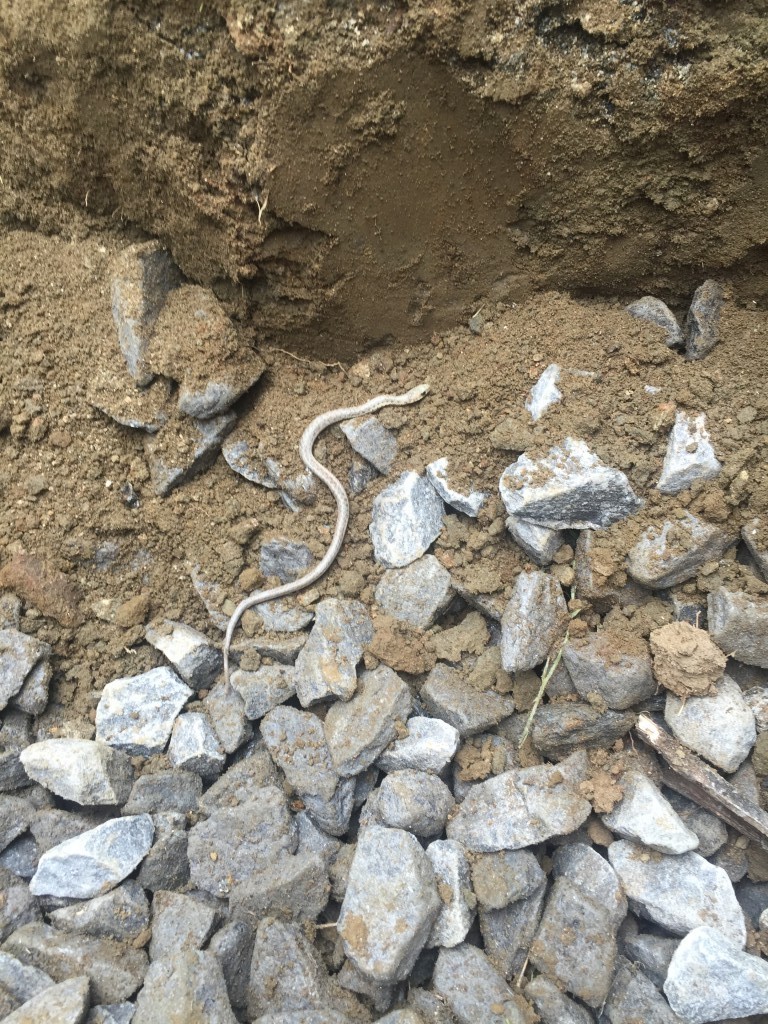
It was worth a try but it’s far from ideal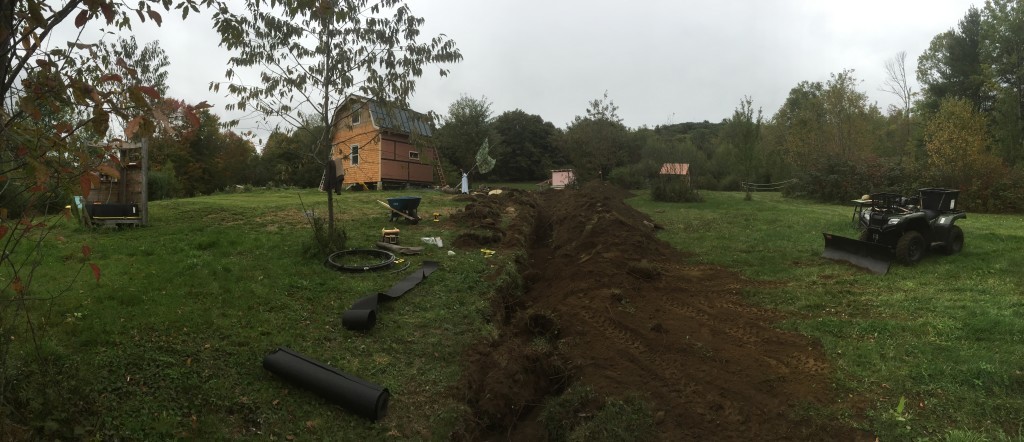
6′ down the well casing, Mike helped me tap a threaded 3/8″ hole so the extra water would go in the black pipe underground. This is the poor man’s way of doing it without a pitless adapter, down the road when we are ready to run water to the house we will make that hole bigger and do it right with a pitless adapter. It didn’t make sense for me do “do it right” immediately because installing a pitless means having to remove the hand pump, which means I might as well put in a second pitless for running water to the house. Which means I might as well dig another trench to the house. Et cetera… It’s just to much to tackle for now, and we don’t even have room in the house for a water tank.
Mike helped turn a very stressful part of the project into a non-event.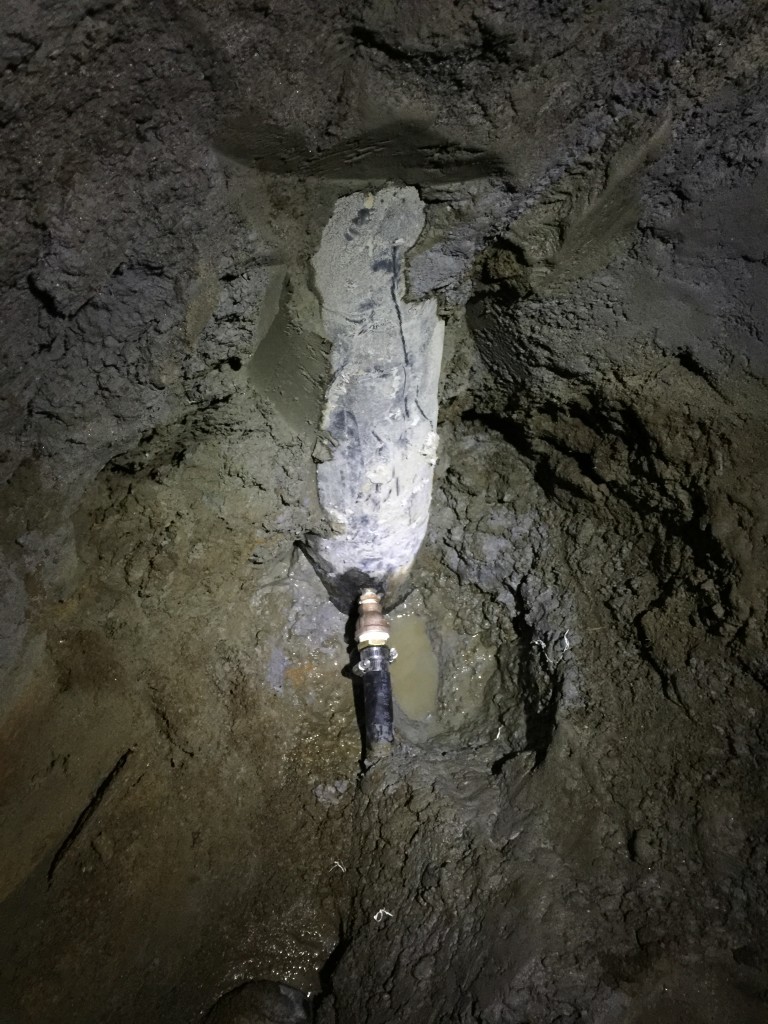
Except that of course, all the rain that we didn’t get this Summer decided to come down right before we had to work in the hole, it made it hard to work in, and it brought the water table up. For the longest time I thought that what we had rigged together was leaking which could contaminate the well. I ended up redoing it all and checked it thoroughly to be convinced that no water from the ground would find its way to the well. I spent many hours after dark in a muddy hole re-doing and checking until I was certain no water was seeping out.
Take 2, with a check-valve, currently checking for leakage
 All in all this was a long, stressful and costly project. As with many things, I’ve learned a whole lot in the process and I feel more prepared for the next challenge. The hope is that it will also be worth it to have this fresh water flowing around the house that we can tap into for projects. I said earlier that the well had stopped flowing at the top. Well 6′ down the casing, we found out it hasn’t 🙂 It was a good surprise to find water there.
All in all this was a long, stressful and costly project. As with many things, I’ve learned a whole lot in the process and I feel more prepared for the next challenge. The hope is that it will also be worth it to have this fresh water flowing around the house that we can tap into for projects. I said earlier that the well had stopped flowing at the top. Well 6′ down the casing, we found out it hasn’t 🙂 It was a good surprise to find water there.
It’s very nice to be able to rely on Mike, Matt & Rick for help & feedback on this massive project. Once again we find ourselves indebted to people’s kindness in helping us.
I will add hay to the top of the leach field for good measure in ensuring it doesn’t freeze; the setup will then be tested by this coming Winter.
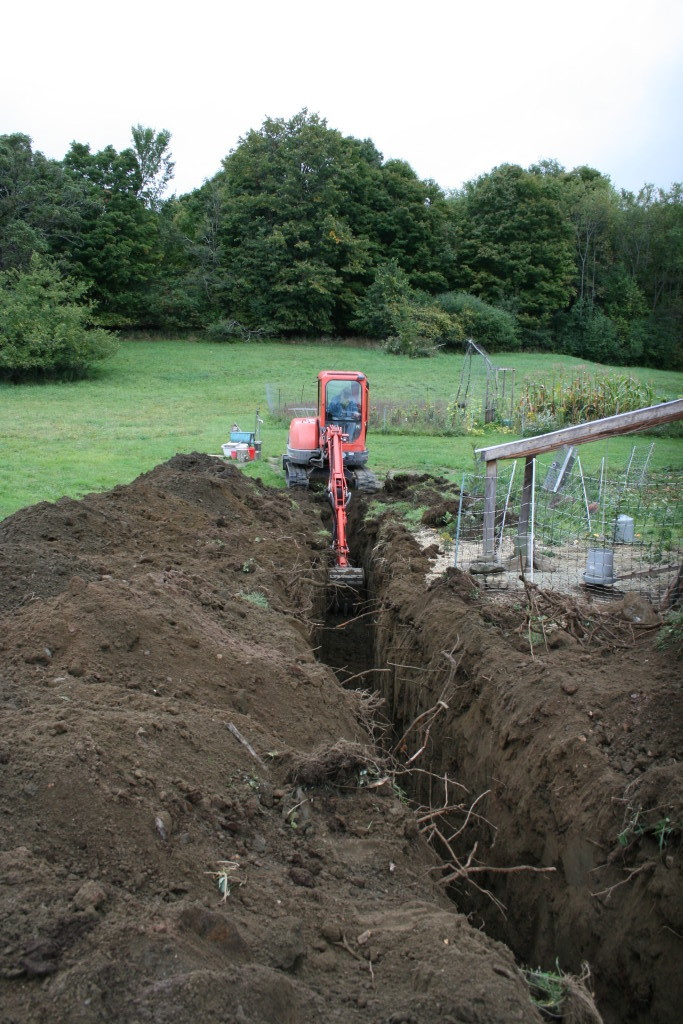
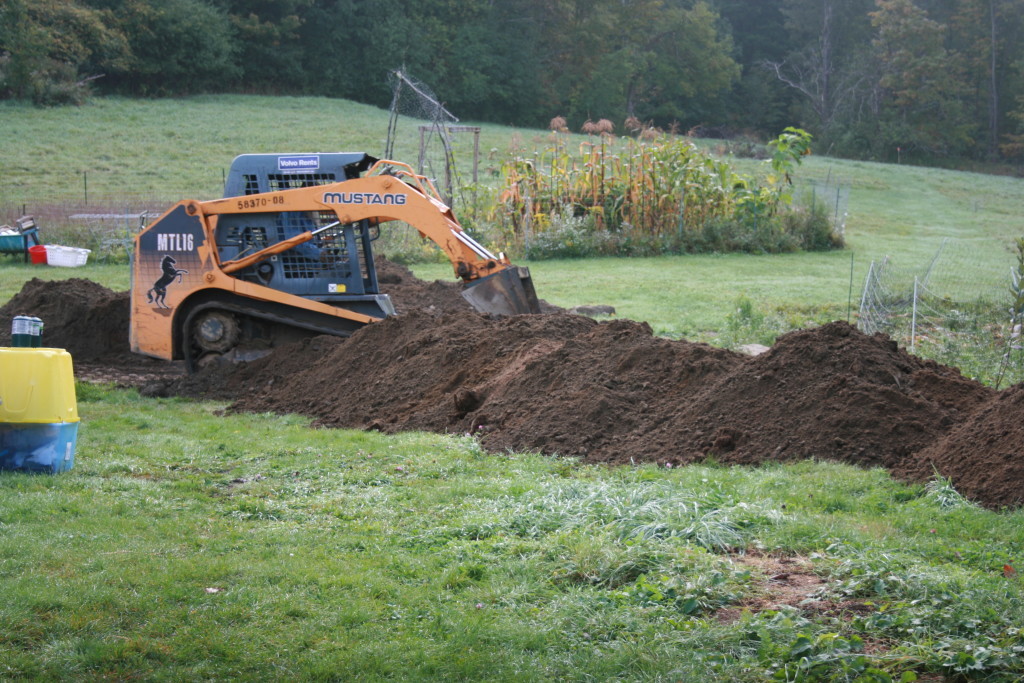
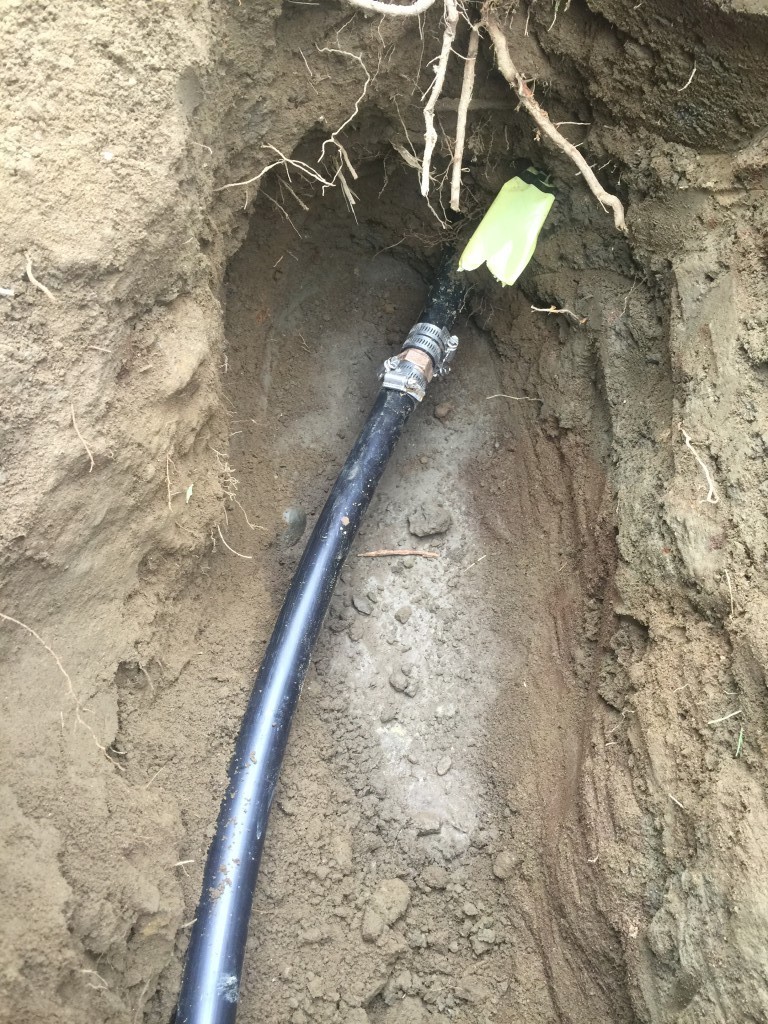
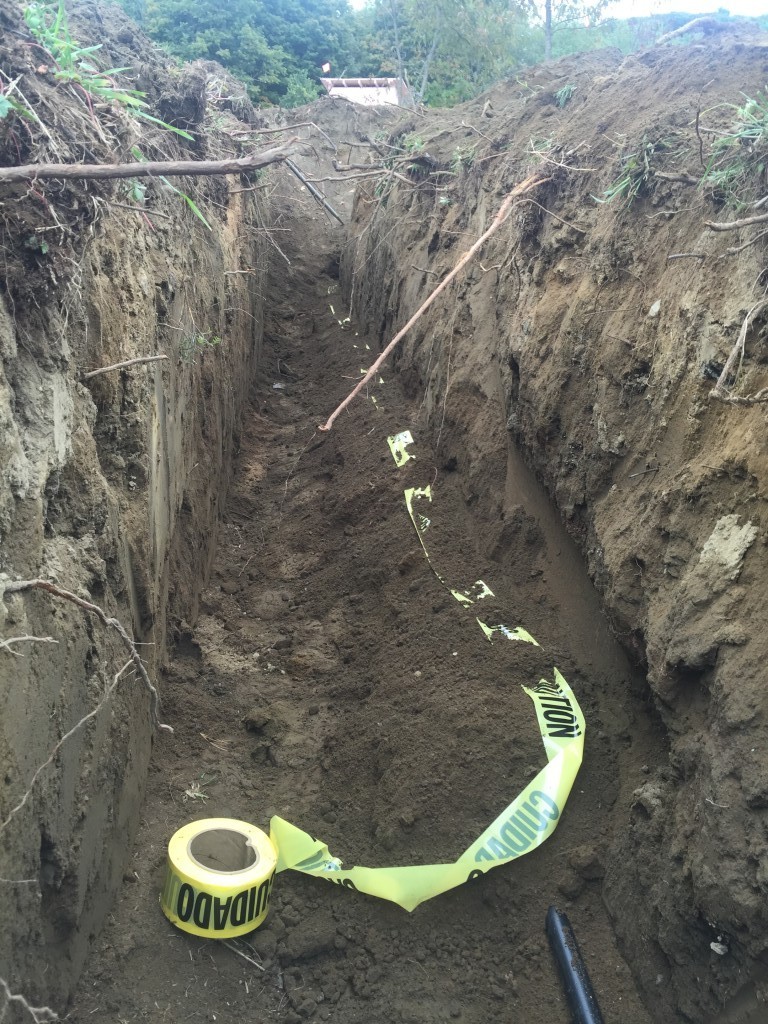
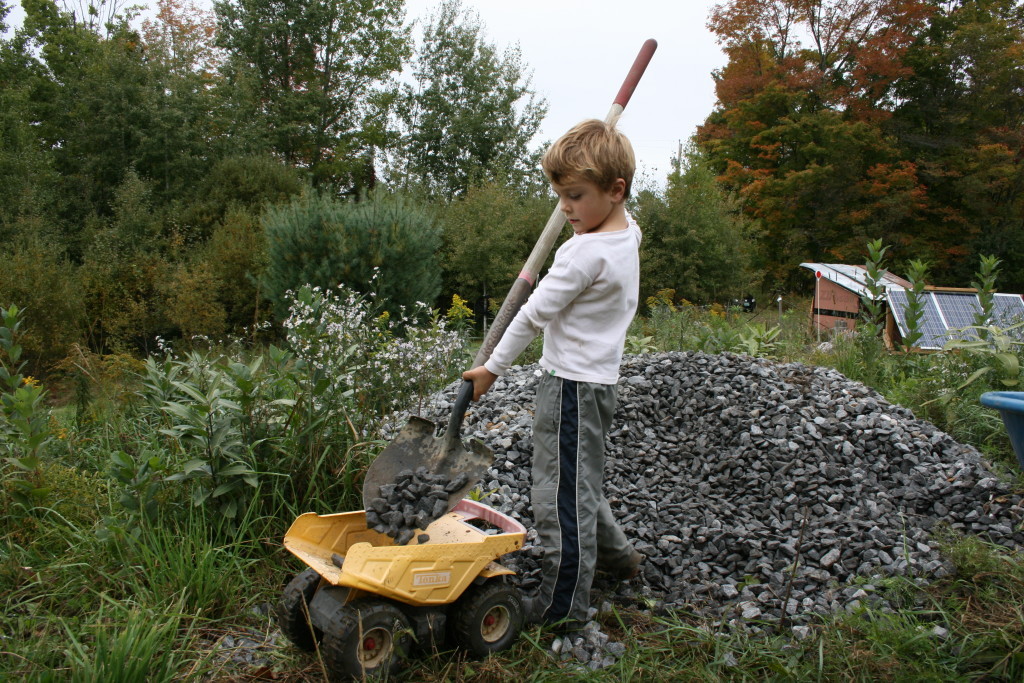

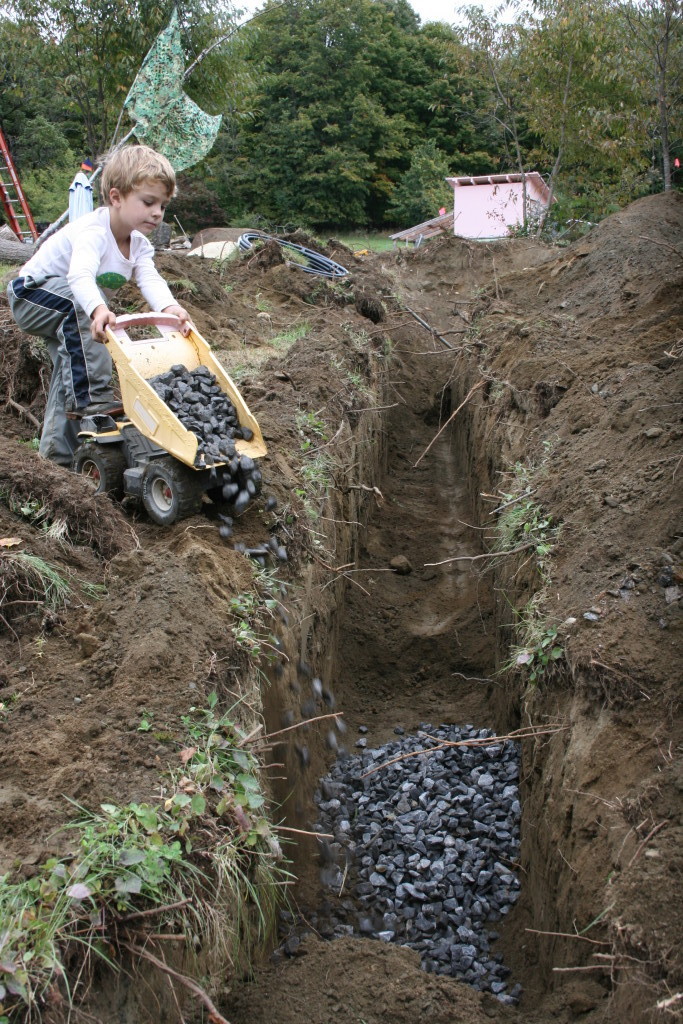
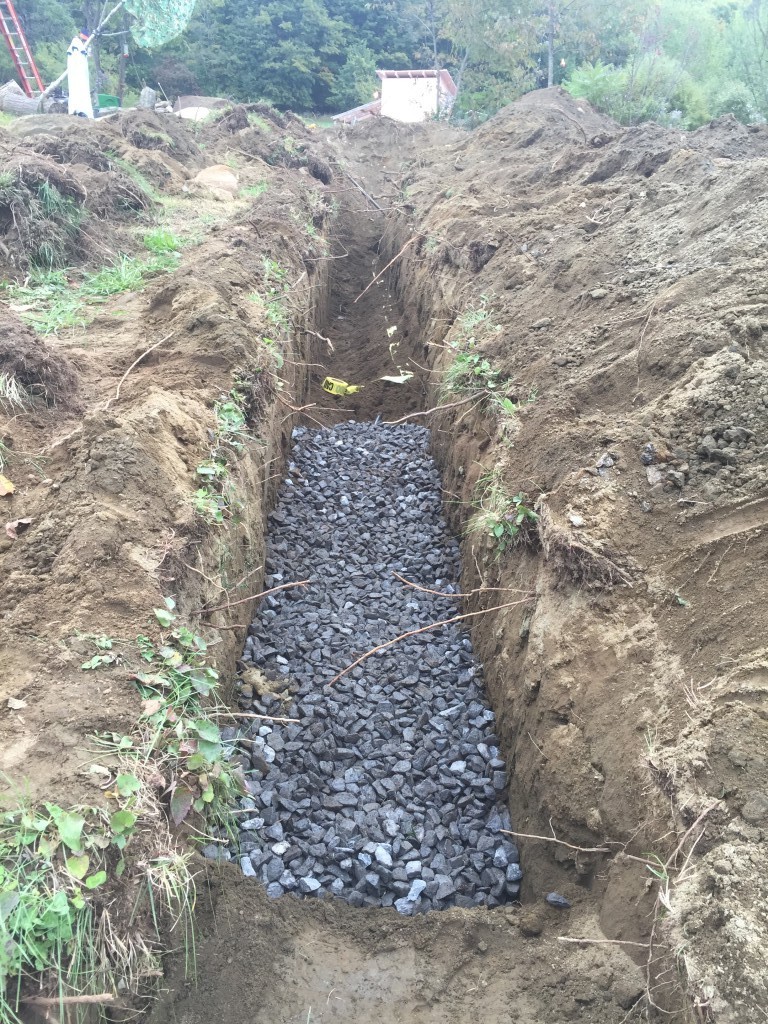
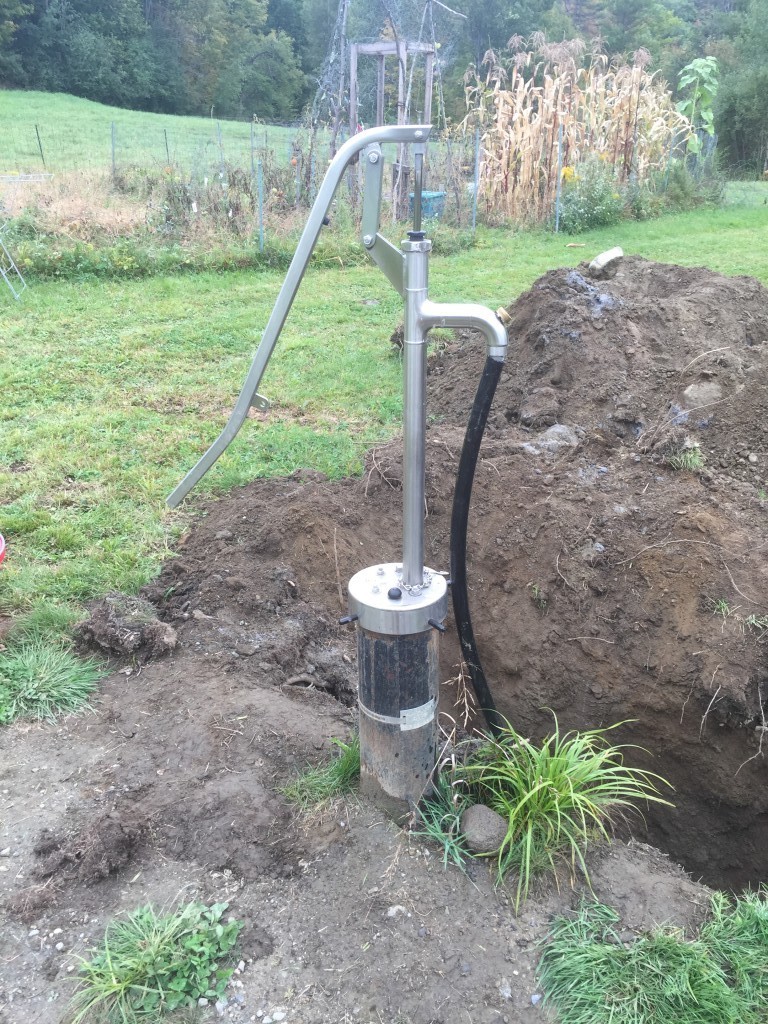
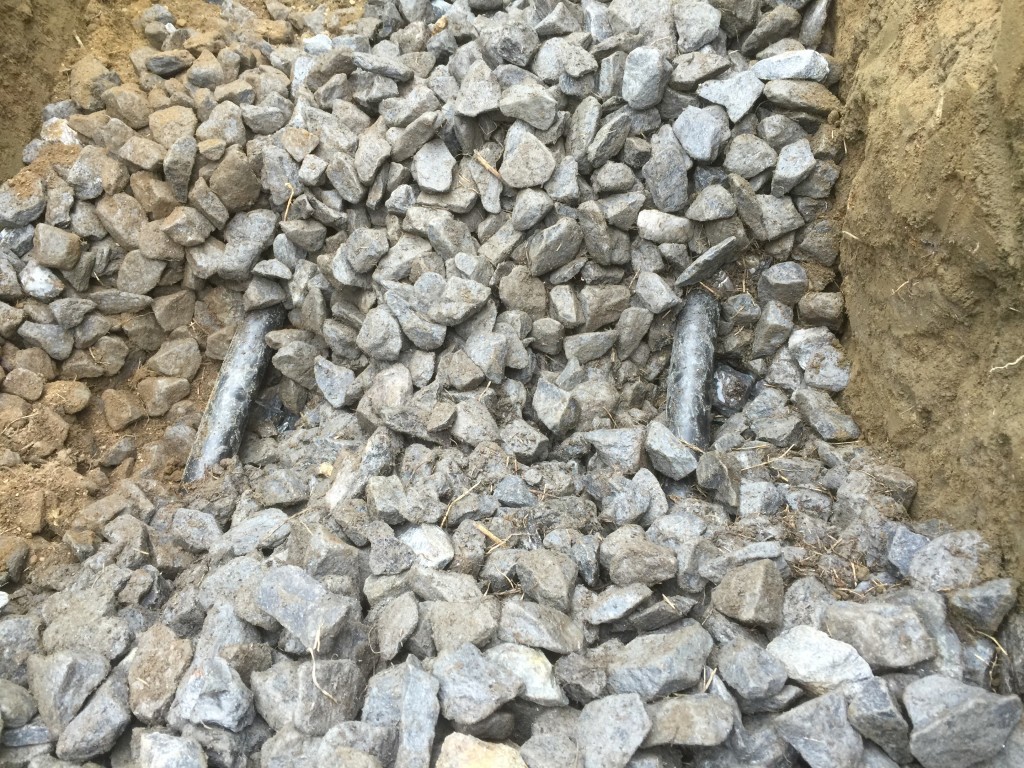


How has this worked out? I am thinking about installing the mother of all dry wells in my backyard. My property is 1.35 acres, and it flooded in Harvey, 2 inches in the house, you know just enough to mess everything up. And last week in Hurricane Imelda the water came close. I cant take chances any more and I cant depend on my city to improve on drainage. I thinking a 6 ft drywell that runs the width of my property could make a place for more of the water to go before it gets even close my my home. Advice? Thoughts?
This has worked out perfectly fine so far, but this is a very different sort of water “disposal” than you are describing. If the flooding you experienced is due to the water table from the ground rising too high, there is not a draining project you can do that would improve that. Maybe a pump in your basement is more appropriate then. If the flooding does come from water running on ground surface toward your house, then yes, you could try to direct it away. I’m not at all qualified to tell you how, and I don’t even know your ground topology so take any of this with a huge grain of salt. I would imagine that filling with rocks a 6ft deep trench for any distance would be expensive, and I’m not sure how much more volume of water you’d be able to absorb. The rocks help for drainage, but they don’t create much more room to contain water, and they only help drain to the soil eventually. If the soil is saturated with water already, you’re back to square 1. I think it might be less expensive and yield better result to try to direct the water away from the house. Do you have anything lower elevation where you could dump all that water?